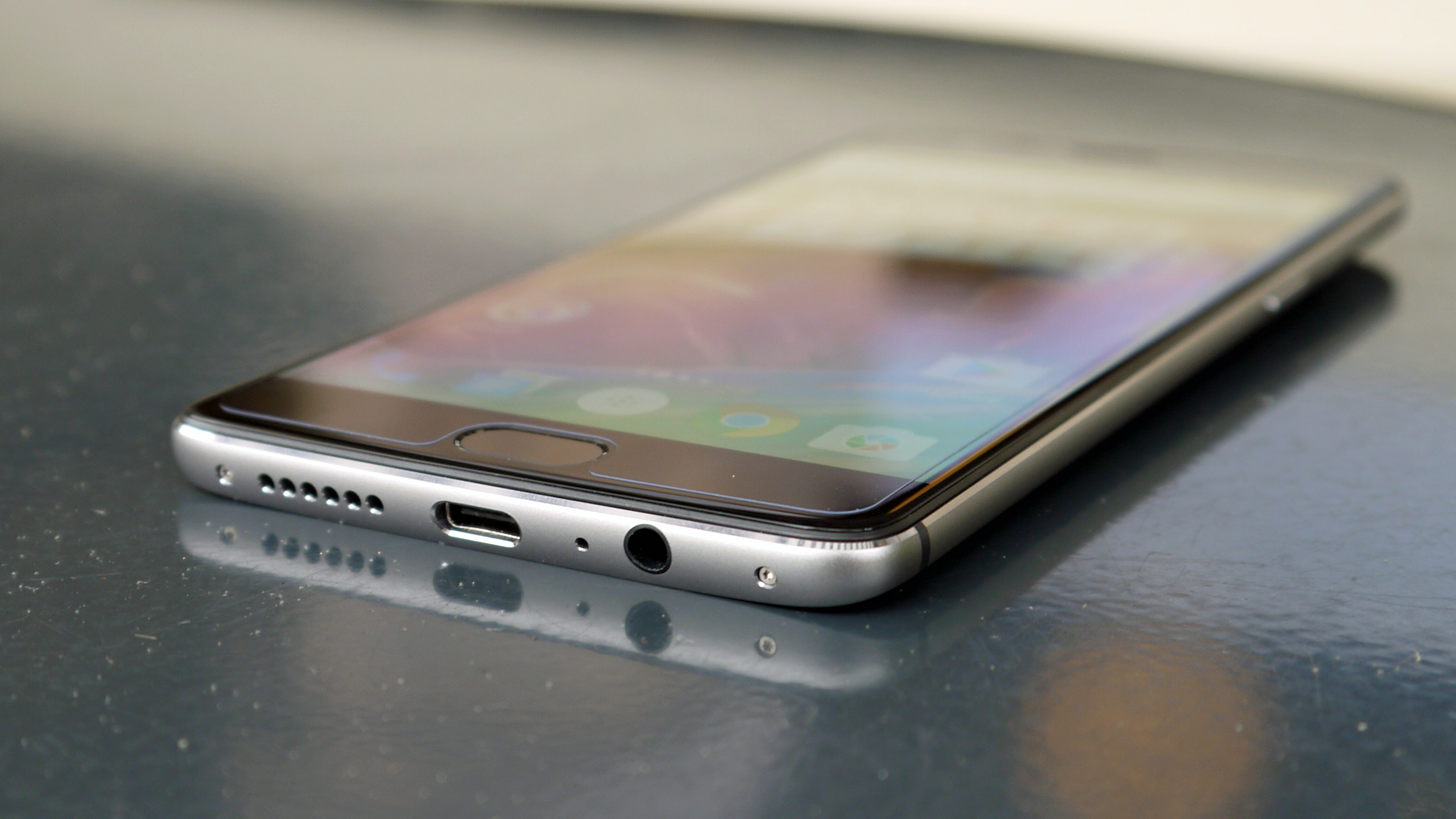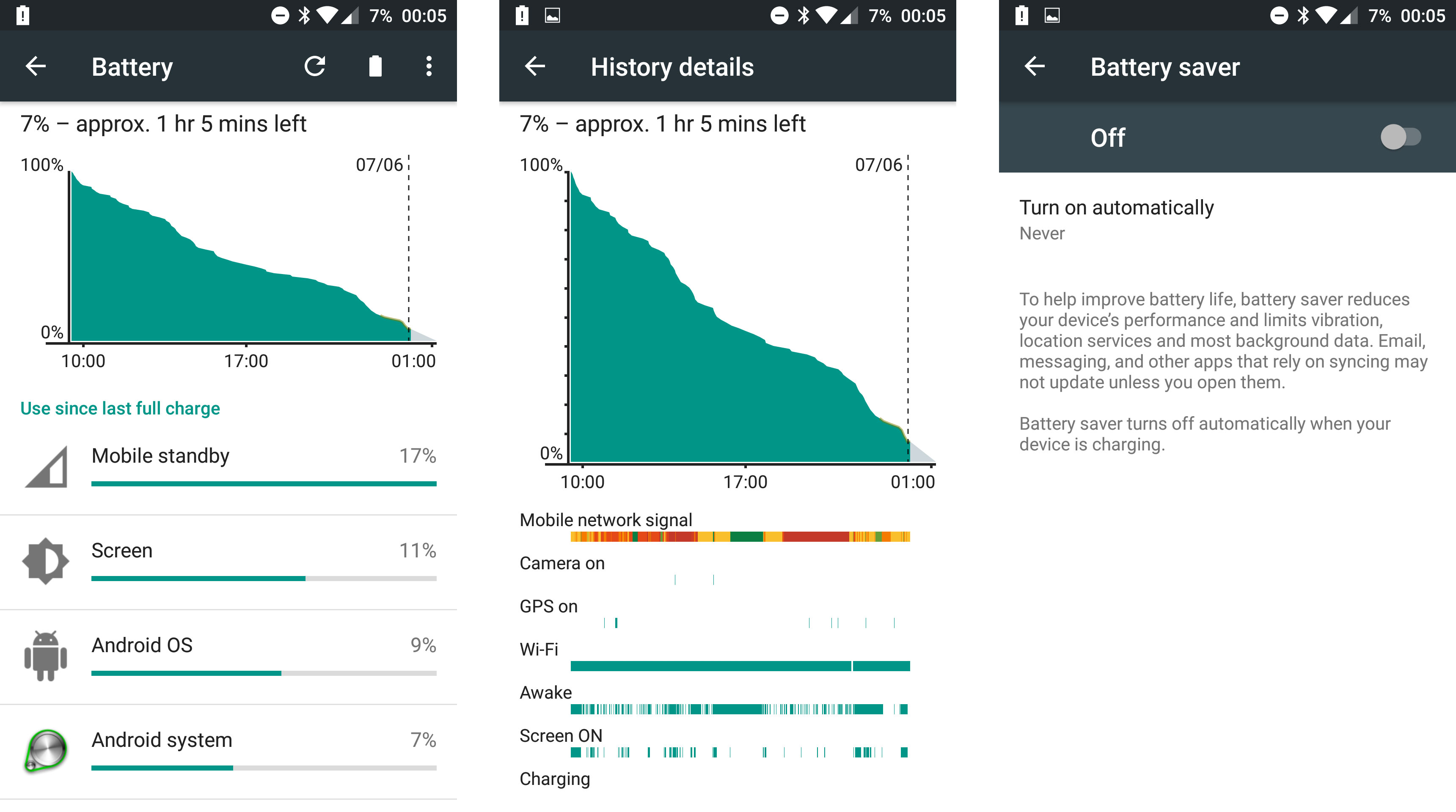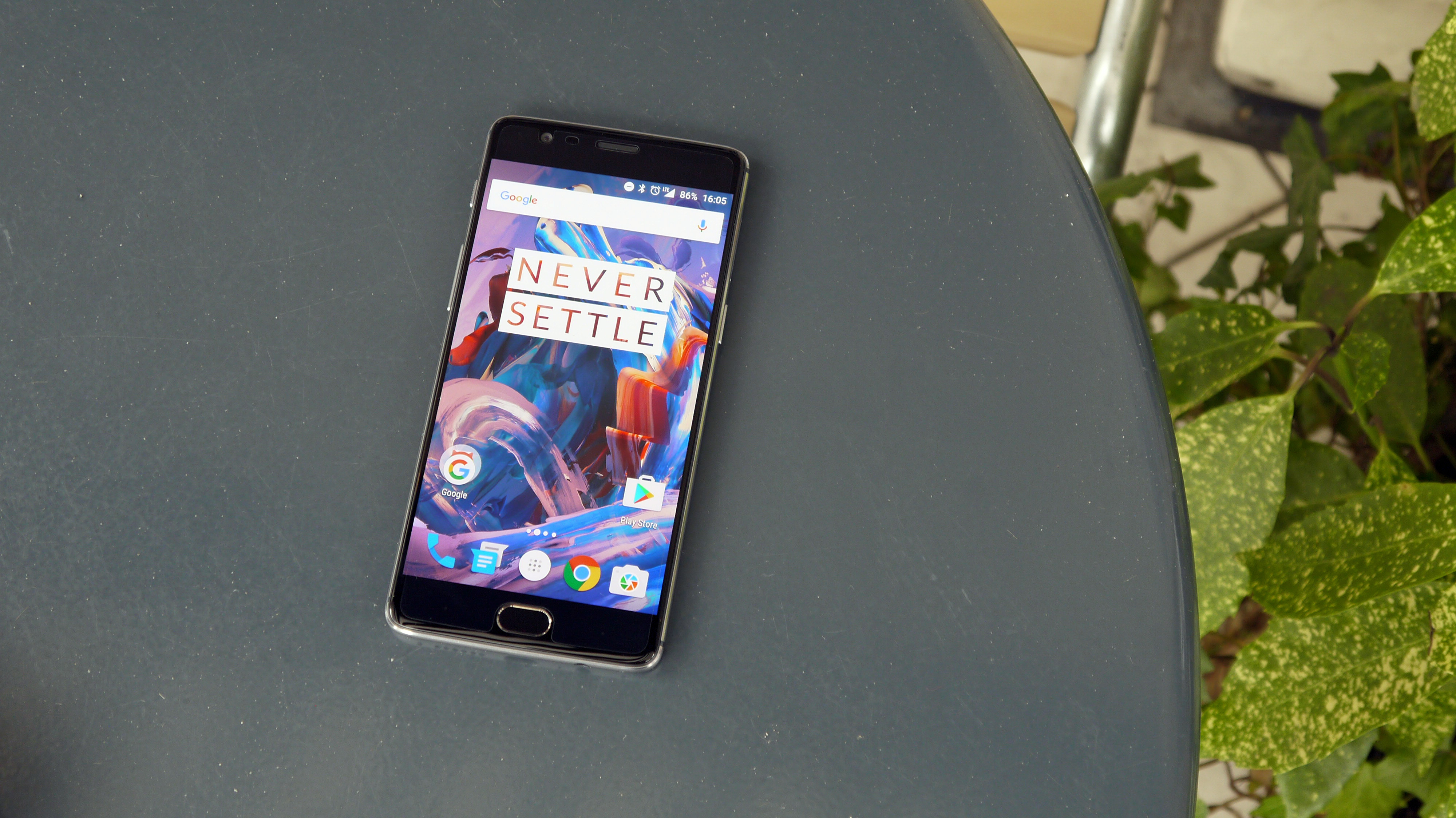Why you can trust TechRadar
Battery life
- The 3000mAh battery probably won't last you through the day
- Fast-charging brings your phone from 0% to 60% in only 30 minutes
- Dash charge makes sure the phone won't overheat when fast-charging
The OnePlus 3 comes with a non-removable 3,000mAh battery – which is smaller than the power pack found in both the OnePlus 2 (3,300mAh) and the OnePlus One (3,100mAh).
That's slightly worrying, as neither of those handsets lasted more than a day before a recharge was required, and it's the same story here.
The thing is, OnePlus is happy with quoting one day of usage from a single charge. While the likes of Samsung, Sony and co like to claim their devices will give you up to two days of use, thanks to varying levels of power-saving modes ranging from mild to aggressive, OnePlus isn't been drawn into that fight.
A smart move or a stupid one? I'll leave you to decide, but OnePlus is confident that it has an ace up its sleeve which makes everything okay.

That ace? Dash Charge. On the surface this is just another fast-charging tech – and digging a little deeper that's still the case. Qualcomm's Snapdragon 820 SoC comes with the firm's Quick Charge 3.0 technology, but OnePlus has developed its own offering which it claims is faster – and it is.
Plug the OnePlus 3 into the Dash Charge block using the chunky USB-C cable, both of which you get in the box, and you'll see the handset regain 60% of its charge in 30 minutes.
OnePlus has also reduced the amount of heat generated in the device during charging by shifting the main power regulator to the plug block. This means the OnePlus 3 only gets warm, not hot during a top-up, although the block does warm up a bit – the heat has to go somewhere.
This also means performance isn't throttled during fast charging, allowing you to continue playing Real Racing 3 without excessive heat generation or laggy feedback.

Charging is impressively quick, and very useful – but only to a point. It's all very well OnePlus saying you don't need the handset to last more than a day, because it can be topped up quickly – but you have to have the charging block and cable with you at all times.
Sure, you can use a standard USB-C cable and block, but refuelling times will be slower. I like having a charger at home, one at work, another in the car and a fourth in my rucksack – in my case that's three additional Dash chargers I need to purchase, and the cost quickly stacks up.
And you will need to top your OnePlus 3 up during the day if you're a heavy user.
Even with moderate use, most days I found myself switching on the Battery Saver as I hit 15% come early evening. General usage included a couple of hours of Spotify streaming, around an hour of gaming, and various messages, social network usage, email purging and web browsing throughout the day.

That allowed me to stay connected from 7am, when I took the OnePlus 3 off charge, until around 11pm, with the Battery Saver mode just about enabling the phone to limp back to my bedside table and the salvation of the charging cable.
I ran the 90-minute, full HD TechRadar video test on the OnePlus 3, with screen brightness at max and the handset connected to Wi-Fi, with accounts syncing in the background. After the hour and a half was up the battery level had dropped from 100% to 77% – a loss of 23% isn't the best result we've seen, but it's also not terrible.
OnePlus claims you'll be able to watch over seven hours of 2K video on a single charge, with screen brightness set to medium. Going by our test you'll certainly get six hours of viewing at full brightness (with HD playback), so OnePlus may be on to something there – although I still think seven hours will be a push for the handset.
While it's disappointing that the OnePlus 3 can't go more than a day on a full charge, it is par for the course at the moment, with most of the top flagships in exactly the same position.
OnePlus has opted for a thinner, more premium design at the cost of a smaller power pack, and while everyone may not agree with that strategy it doesn't put the handset at a particular disadvantage compared to its rivals.

TechRadar's former Global Managing Editor, John has been a technology journalist for more than a decade, and over the years has built up a vast knowledge of the tech industry. He’s interviewed CEOs from some of the world’s biggest tech firms, visited their HQs, and appeared on live TV and radio, including Sky News, BBC News, BBC World News, Al Jazeera, LBC, and BBC Radio 4.
